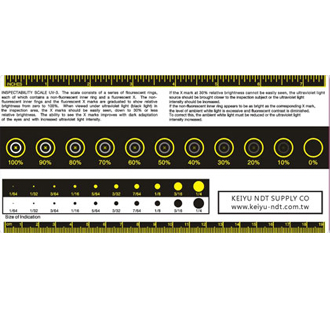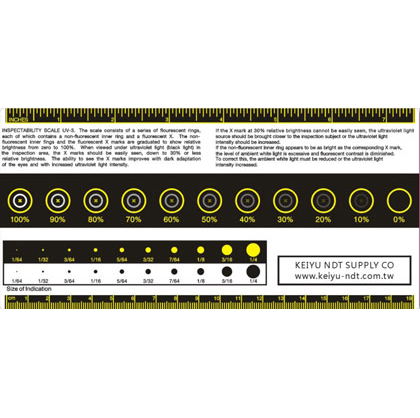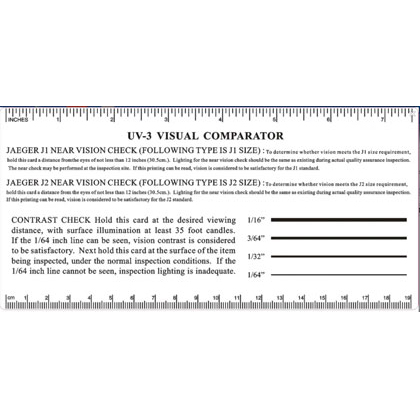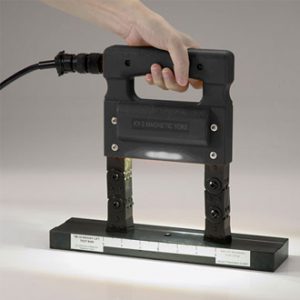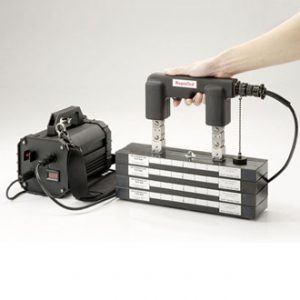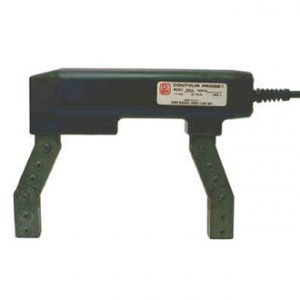UV-3 UV INSPECTABILITY SCALE & VISUAL COMPARATOR
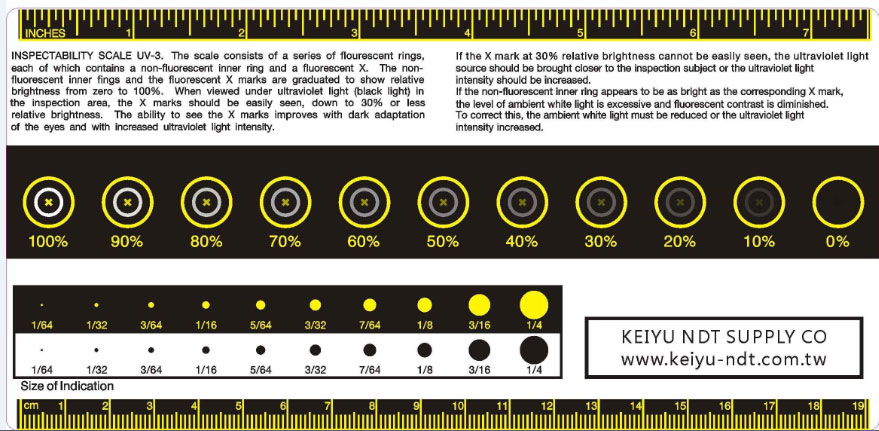
USD25
Set of 20 – Each USD15
The Inspectability Scale is used under ultraviolet (black) light to determine if fluorescent brightness at the test surface is adequate and in proper contrast to ambient white light. It can also disclose whether the operator can see the size the size indication he is seeking.
The scale consists of a series of fluorescent circles, within which are smaller white circles, within each of which is a fluorescent “X”. The brightness of each succeeding white circle and fluorescent “X” diminishes until the last in the series is no longer visible. The scale is held at the test surface and the operator determines which of the X&39;s he can see.
If the operator cannot easily see up to and including the X at 30 percent relative fluorescent brightness, the fluorescent light source should be brought closer to the work surface or the fluorescent light intensity should be increased.If, when the scale is held at the test surface, the white circles appear to be as bright as the corresponding fluorescent X&39;s, the ambient white light is excessive and the fluorescent contrast is diminished. To correct this, the ambient white light must be reduced or the fluorescent intensity increased. Also included with the Inspectability Scale, are a fluorescent inch and metric ruler and a series of measured fluorescent dots and black dots, for defect indication comparison.
VISUAL COMPARATOR
The Visual Comparator consists of sentences printed in Jaeger 1 and Jaeger 2 print sizes.
The Operator&39;s ability to read the appropriate sentence (J1 or J2 as required by the applicable specification at the test surface, determines his ability to test under the test lighting conditions.
If the operator can read the J1 or J2 lines as appropriate, under eye test conditions, but not at the test surface, test lighting is inadequate and must be corrected.
Additionally, there are a series of measured lines to be viewed for determining if vision contrast is adequate under the existing test lighting conditions. If the 1/64th inch line cannot be easily seen when the comparator is held at the test surface, test lighting is inadequate


